The first time I went to Madeira, I thought it would be my only visit. Let’s be real—it’s a bit out of the way, even for those living in Europe. But life has a way of surprising you, and a year later, I found myself back for a wedding.
Even after two trips, this beautiful island still has more to explore. This itinerary for Madeira is crafted to help you experience its best spots—from dramatic hikes to hidden black sand beaches. Whether you’re a hiker, a beach lover, or a casual explorer, this guide has something for everyone.
About Madeira
Floating in the Atlantic Ocean about 1,000 km (620 miles) from mainland Portugal, Madeira is often dubbed the Hawaii of Europe. I’ve never been to Hawaii, and honestly, why does everything I have to be expressed in US terms? But I guess that’s the extent of American imperialism influence—okay, enough of my political musings, back to Madeira.
This tiny Portuguese island, just 741 km² in size, boasts lush vegetation, a subtropical climate, and volcanic landscapes. Imagine endless green rainforests, coastal towns, and imposing mountains that make you feel like you’ve stepped into a remote paradise.
Madeira is part of the Macaronesia region—a cluster of islands that includes Cape Verde, the Azores, and the Canary Islands off the coast of Africa. The archipelago comprises four islands: Madeira, Porto Santo, Desertas, and the Selvagens. Less than a two-hour flight from continental Europe, it feels like a secluded oasis in the middle of the ocean.
How is This Guide Different?
Before we dive in, let’s get a few things straight. I’m assuming you’ll rent a car—I can’t stress this enough. Public transport here isn’t the best option, believe me. I made that mistake, and within a day, we went and rented a car. Taxis are expensive, and even though it’s a relatively small island, it takes time to get from one end to the other.
This 7-day itinerary is flexible and can be shuffled around based on where you’re staying. For example, if you’re not based in Funchal, you can skip the first day and explore your own neighborhood instead.
Each day mostly tackles a different part of the island—north, south, east, etc.—so you won’t be backtracking unnecessarily. Consider each day as a separate adventure, and feel free to rearrange them however you please.
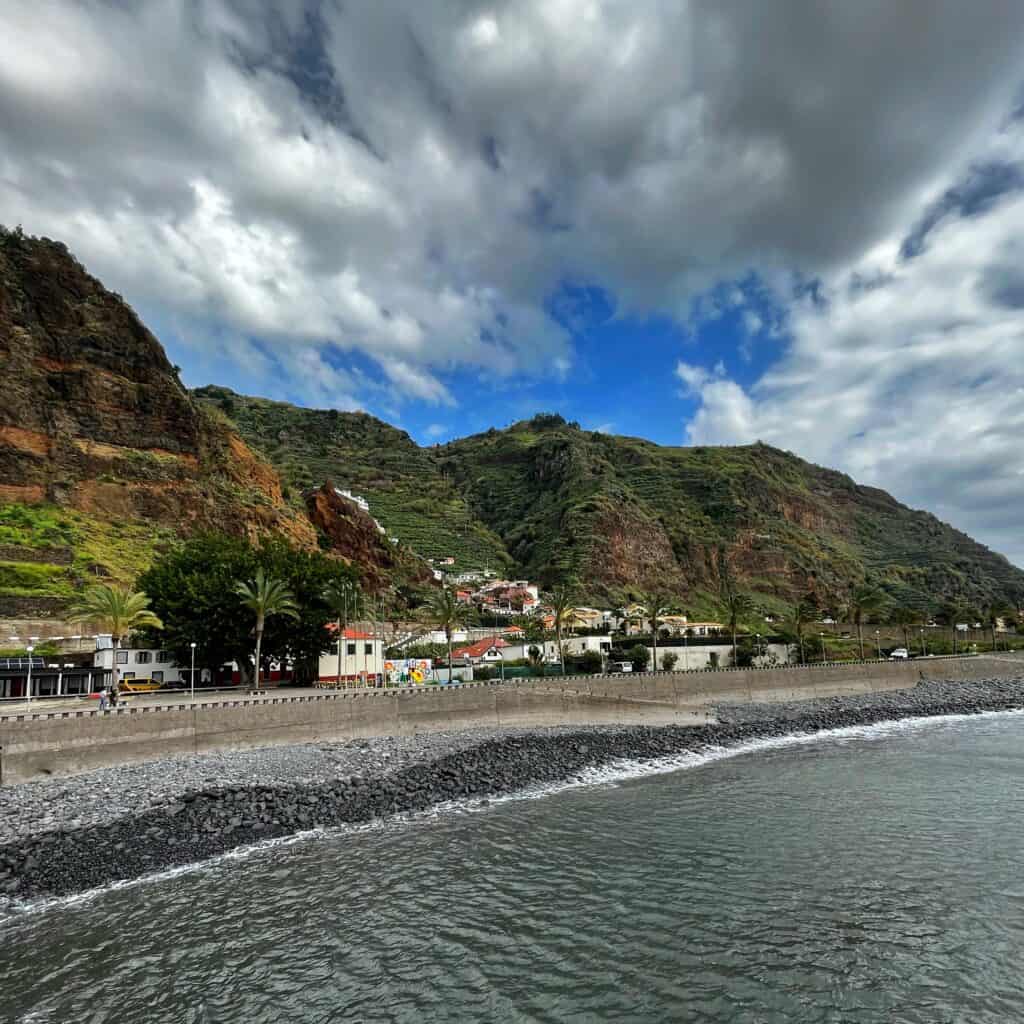
Itinerary For Madeira, Portugal: At A Glance
Day 1: Funchal
I didn’t stay in Funchal either time I visited Madeira—too touristy for my taste. If you’re like me, you’ll find tips on where to stay further on in this guide. But if you’d rather start with convenience, then Funchal is your Day One. Use this day to get oriented with Maderia, and ease into the island life.
Funchal Old Town (Zona Velha)
Wandering through Funchal’s Old Town feels like stepping into a living gallery. Narrow, cobblestone streets are lined with shops, cozy cafes, and colorful art displays, especially along Rua de Santa Maria. This street, one of Funchal’s oldest, is famous for its Painted Doors project—a burst of color transforming everyday doors into artistic canvases.
While you’re here, don’t miss the 15th-century Corpo Santo Chapel and the bright yellow São Tiago Fort. Both landmarks add a layer of history to this vibrant neighborhood, and they’re perfect stops to snap a few photos and enjoy a taste of Funchal’s heritage.
Monte Palace Tropical Gardens
Monte Palace Botanical Gardens is the perfect escape from the city below, tucked into the hills above Funchal. Spanning over 7 hectares, these gardens feature exotic plants, koi ponds, and wandering peacocks, with sculptures and walkways that make each turn something to explore. Entry is about €12.50 per person, but the views alone are worth it.
The best way to get there? Take the cable car from the waterfront—it’s €11 one way or €16 round-trip. And for the way back, skip the return ticket and take the iconic toboggan ride. It’s a steep, thrilling 2 km dash down the hillside, and while it’ll cost you €30 for two people, it’s a true Funchal experience.
Mercado dos Lavradores (Farmer’s Market)
This bustling farmer’s market is an explosion of colors and flavors, from vibrant flowers to fresh produce and spices. On weekends, the market transforms into a true local gathering spot. The fresh fish market is a highlight, especially if you arrive early to watch the massive tuna and eerie black scabbard fish getting prepped. Creepy-looking or not, it’s all part of the island’s culinary charm.
When I visited on a Thursday, it felt underwhelming. But visiting on a Friday or Saturday is a game-changer. The place fills with locals grabbing their weekend supplies, and the energy is infectious. Grab a seat, sample some Poncha (warning: it’s strong), and soak in the authentic flavors of Funchal.

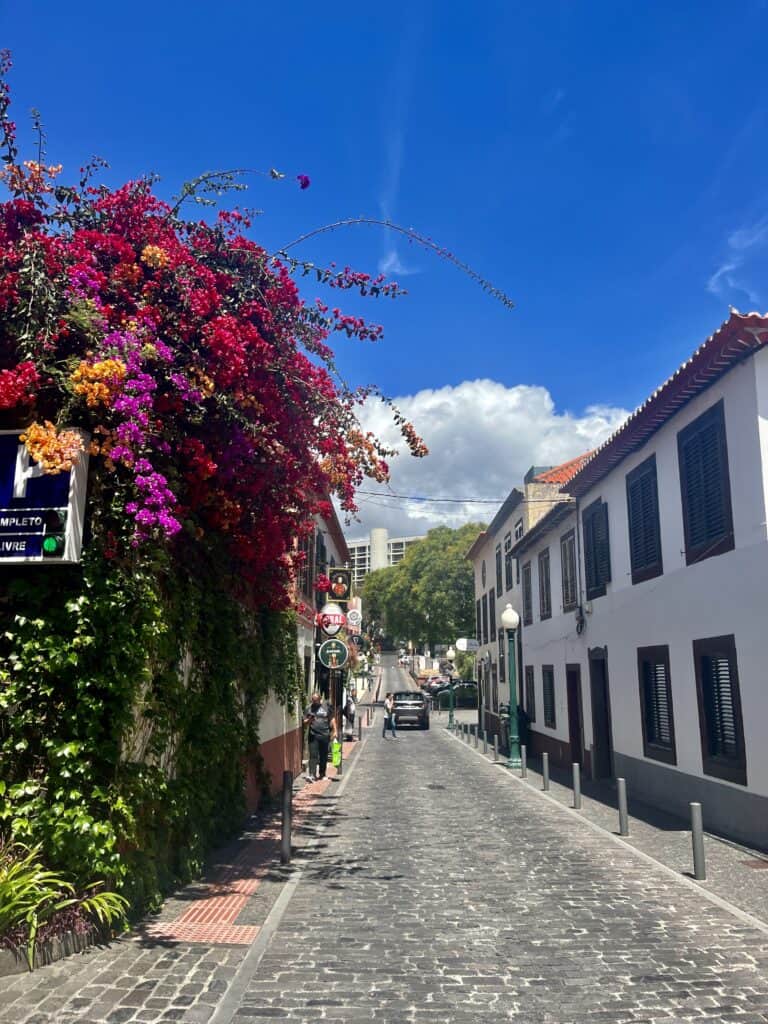
Day 2: Central – Hiking Day
After easing into island life in Funchal, it’s time to dive into Madeira’s epic landscapes with a day of hiking.
Madeira is a hiker’s paradise, with trails that feel like stepping into a mythical landscape. I can’t recommend hiking here enough—it’s an experience you won’t forget.
There are so many beautiful hikes available, the Madeira Tourism website lists out all of them and you can see which one you’re like to do.
Pico do Arieiro to Pico Ruivo Hike
This is the classic Madeira hike, leading you from Pico do Arieiro to Pico Ruivo. It’s about 5-6 hours round-trip and a demanding trek with steep climbs, narrow ridges, and rugged terrain.
But the views? Unreal. If you can, start early for sunrise. Watching the sun break over the mountains makes the climb worth every step. This hike isn’t for the faint-hearted, but it’s easily one of the most spectacular experiences on the island.
A word of advice: check the weather. I learned this the hard way on the Pico do Arieiro to Pico Ruivo hike. Pico Ruivo, at 1,862 meters (6,109 feet), is Madeira’s highest peak, but all I saw were clouds and rain. I figured any hike was better than no hike, but let’s just say… I was wrong. Don’t make my mistake. If conditions are good, you’re in for a visual treat like no other.
Alternatives for Non-Hikers
Not a fan of hiking? No problem. Head to the Madeira Cable Car and soar over the island’s landscapes for a bird’s-eye view of Funchal and beyond. You could also explore the island’s many viewpoints accessible by car, like the Cabo Girão Skywalk—a glass platform suspended over cliffs with spectacular ocean views.
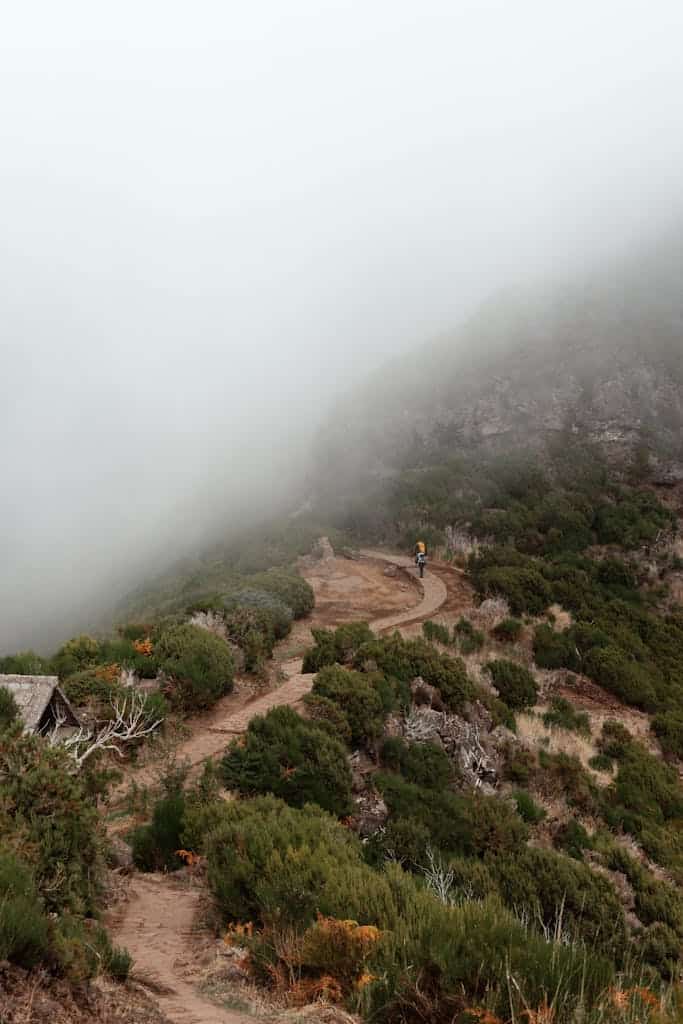

Day 3: Northwestern Madeira
After a full day of hiking, today’s for soaking in the rugged, scenic beauty of Madeira’s North Coast. Here, you’ll find everything from natural pools and sandy beaches to charming villages tucked among mountains.
This part of Madeira feels wild, untouched, and undeniably captivating.
Porto Moniz Natural Swimming Pools
In Porto Moniz, you’ll find volcanic rock pools filled with Atlantic Ocean water—a surreal experience that blends sea and mountain. There are two sets of pools here: the paid Piscinas Naturais de Porto Moniz, a bit more refined with facilities, and the free Piscinas Naturais do Aquário, which offer a more “raw” experience.
Arrive early if you want to enjoy the pools in a serene state. Nothing quite beats a morning dip here with just you, the quiet waters, and the Atlantic beyond.
Seixal Beach
Seixal Beach is one of Madeira’s rare black sand beaches, framed by towering cliffs and lush greenery. Even if you don’t catch the sunrise, the sight of the dark sand against the blue ocean is something special. Nearby, you’ll find volcanic pools, Poças das Lesmas, perfect for a quick swim. Grab lunch at the small beachside bar, which offers solid food at reasonable prices and a view that’s worth every second.
Ribeira da Janela
Ribeira da Janela is a striking spot, especially around sunset. Here, jagged rock formations rise from the ocean, creating an eerie yet beautiful scene. It’s a photographer’s paradise with the waves crashing against rocks and the sky shifting colors as the day fades. If you’re in search of an iconic Madeira sunset, this is the place.
São Vicente
Tucked in a green valley, São Vicente is a quaint town with red-roofed houses that climb up the hills. The standout here is the chapel of Nossa Senhora de Fátima, perched atop a hill with sweeping views of the town below. You’ll need to climb 180 steps to reach it, but the view over the valley, surrounded by lush mountains and the northern coast, makes it more than worth it.
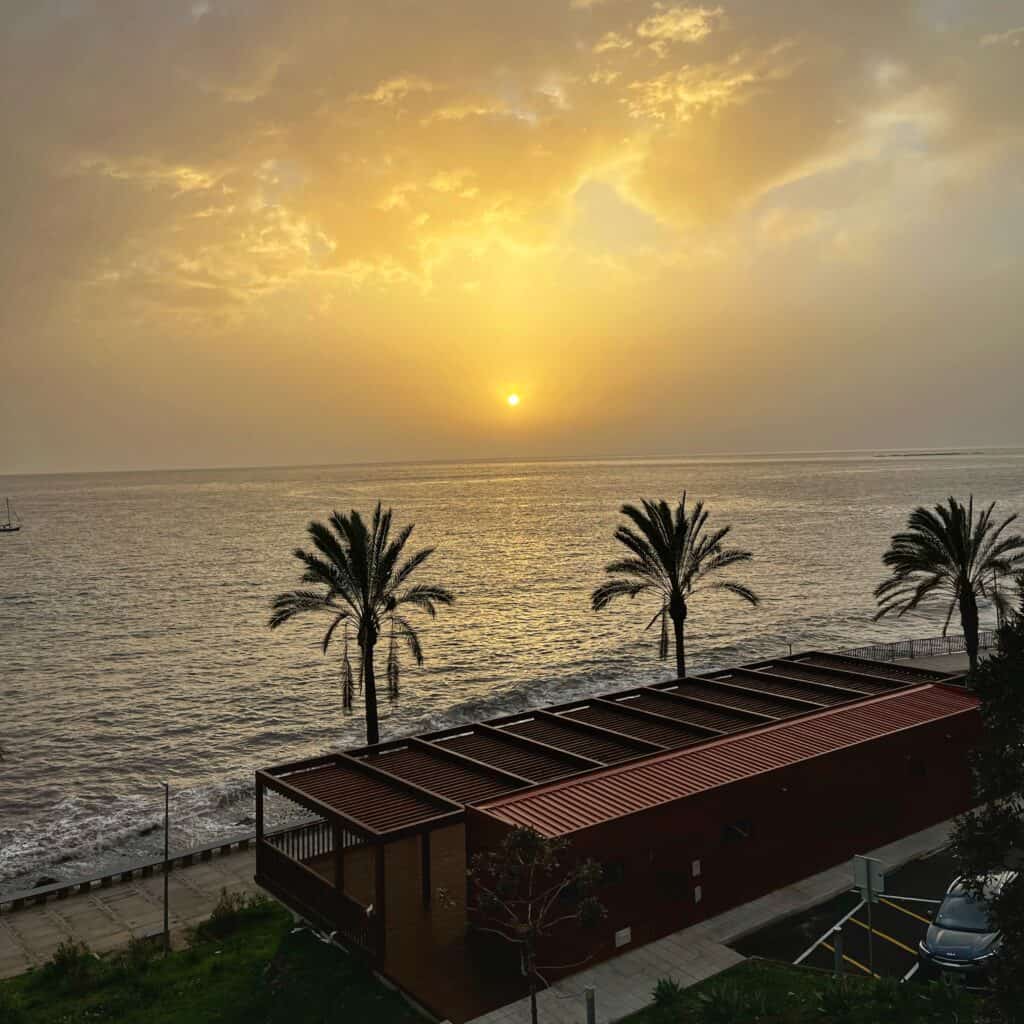
Day 4: Central Madeira
Madeira’s interior is like stepping into another world—a lush, green haven filled with ancient laurel trees, mist-covered trails, and captivating levada walks.
Levada Walks: Choosing Your Adventure
Levada trails are Madeira’s unique system of hiking paths, following ancient irrigation channels carved into the island’s hillsides. One of the most popular options is the PR9 Levada do Caldeirão Verde, a relatively flat, 7-mile round trip hike. This trail weaves through lush greenery, skirts steep drop-offs, and takes you through multiple tunnels—bring a headlamp! The grand finale? A stunning waterfall waiting at the end. The trail can get crowded with guided groups, so start early if you want some solitude.
If you’re up for a longer hike, consider combining this with other levada trails in the area. Nearby, the Valley of Rabaçal offers two more epic spots: Cascata do Risco (Risco Waterfall) and 25 Fontes Falls. Take the winding road to Rabaçal’s shelter house and follow the paths to these impressive waterfalls—whichever you visit first, you’ll be treated to the lush sights Madeira is known for.
Fanal Forest: Beyond the Tourist Trails
Fanal Forest, often called Madeira’s “Enchanted Forest,” is a nature preserve filled with centuries-old laurel trees that thrive in their own misty microclimate. The fog that drifts through Fanal creates an eerie, magical atmosphere, especially on rainy days when the forest feels like a scene from a fairytale. Located off ER 209, Fanal is accessible from both the north and south sides of the island.
Most visitors stick close to the parking lot, but for a deeper experience, venture further into the forest. As you cross the field, you’ll discover more laurel trees and even a hilltop view if you hike up. Layers and rain gear are a must—this forest has its own weather patterns, and the mist can turn into rain in minutes.
Day 5: Eastern Madeira
Today, you’ll head east. The eastern side of Madeira is raw, rugged, and unforgettable. Today, you’ll explore dramatic coastlines, sweeping views, and a charming town that feels like stepping back in time.
Ponta de São Lourenço
Ponta de São Lourenço is one of those hikes that rewards the early risers. We arrived at sunrise, and I couldn’t be more grateful. Crowds can make or break a hike, and with this trail’s popularity, early arrival is key to soaking up the views in peace. The hike along this peninsula offers 360° coastal views, jagged cliffs, and rocky paths, with the ocean stretching out on both sides.
The trail is a mix of cobblestone and dirt, about 5 miles round trip, with most of the climb saved for the end where you’re rewarded with a stunning viewpoint. There’s even a café at the end if you want to grab a coffee or snack—though it may not be open if you’re early. Plan for about 2-3 hours here to take in the full experience.
Machico Town or Prainha Beach
If you’ve still got some energy post-hike, head to the historic town of Machico, one of Madeira’s oldest. This town is home to Prainha Beach, one of the island’s rare golden sand beaches (imported from Morocco!). Take a dip, relax, or explore the town’s streets and learn about its roots dating back to the 1400s, when Portuguese explorers first set foot on the island.Machico has a more laid-back vibe compared to Funchal, with scenic views and a quieter, authentic atmosphere. The beach is perfect for unwinding and letting the east coast’s natural beauty sink in before heading back.
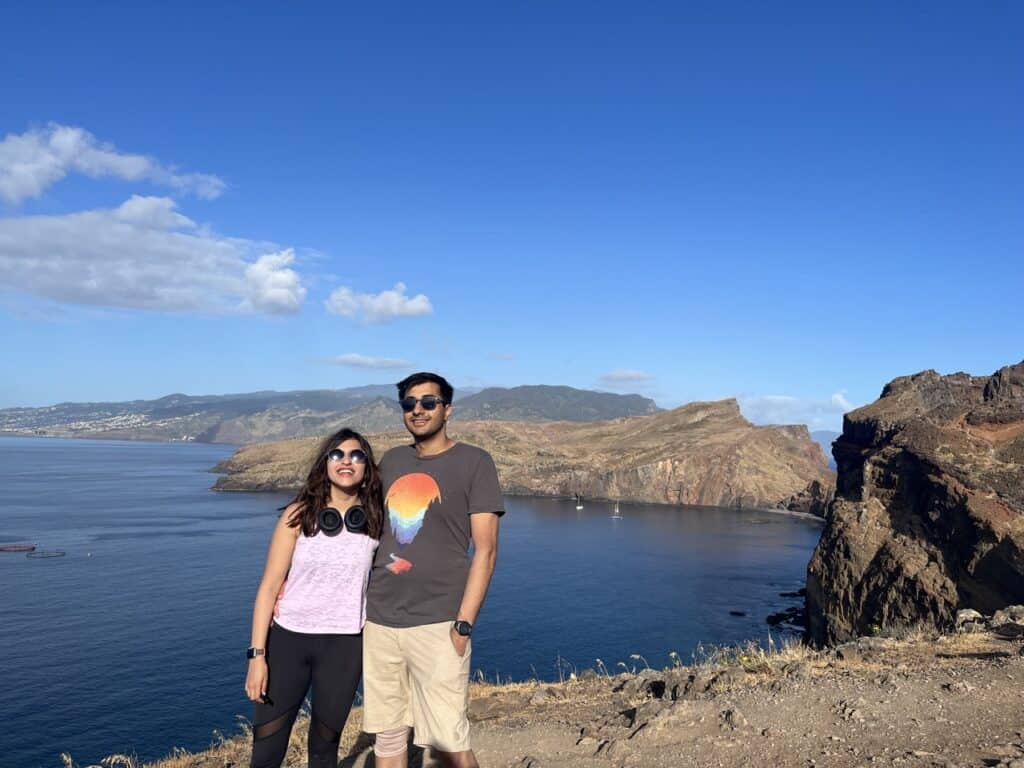
Day 6: West – Green Mainland
Madeira’s west coast feels a world apart, a place where lush green landscapes meet the Atlantic’s deep blue. Today, you’ll dive into the island’s more relaxed, natural side, this is also where there is a big digital nomad community.
Sunset at Ponta do Sol
The first time I stayed in Madeira, I chose Ponta do Sol—and I have no regrets. Almost every evening, I watched the sun dip below the horizon, casting golden hues over the coast. Known for its Digital Nomad Village, Ponta do Sol has become a hotspot for remote workers and creatives alike, but it’s the slow, scenic vibe and daily sunset views that keep pulling people back. For a laid-back evening, this is the perfect spot.
Cabo Girão Skywalk
For a quick thrill with stunning views, stop at Cabo Girão Skywalk. This glass platform sits 580 meters above sea level, making it one of Europe’s highest sea cliffs. Stepping onto the skywalk feels like floating over the ocean—equal parts exhilarating and terrifying. Admission is free, but it’s popular, so visiting in the late afternoon when the crowds thin out can make the experience even more intense.
Day 7: Take Your Pick
After a packed week of exploring, take your final day to unwind or dive into a few more unique experiences. Day 7 is perfect for guided tours, relaxing moments, or a mix of both
Take a Whale & Dolphin Watching Tour
Madeira’s clear, deep waters make it one of the best spots in Europe to see dolphins, whales, and even turtles. Hop on a boat tour from Funchal or Calheta, and you’ll have a good chance of spotting these incredible creatures up close. Most tours last a few hours and include expert guides who’ll share insights about marine life around Madeira.
Visit a Traditional Madeiran Winery
If you’re a wine enthusiast, a guided wine tour is a must. Many local vineyards offer tastings of Madeira’s famous fortified wine, giving you a glimpse into the island’s winemaking history. A wine tour provides a laid-back way to learn about local flavors, savoring wines that are unique to the island’s volcanic soil.
Sit At A Beach and Do Nothing
I can’t believe I have to write this out, but I’ve traveled with so many different kinds of people and a lot of them are chasing a to-do list on vacation. This is your time to do nothing, grab a book, go to the beach, stay there all day. Spend time with nature. Your to-do lists will be waiting for you when you fly back home!
Where To Stay in Madeira
Madeira is compact enough that you could base yourself in one city and easily do day trips—especially if you’re renting a car (which, trust me, is the way to go here). But if you don’t have a car, Funchal is your best option for convenience and public transport.
Consider staying in Funchal for easy access to the island’s southeast or Porto Moniz for a laid-back vibe and stunning coastal views on the west side.
Here are my top mid-range hotel picks in different areas. For more options, both Booking.com and Airbnb have a great range to fit any budget.
Funchal Accommodation: Belvedare Boutique is the perfect mix of in the city centre but also quiet enough to get more island vibes. It has incredible view from the apartment on the first floor – you can see the city, ocean, mountains!
Porto Moniz Accommodation: Waves Song – Cottage is a spacious, well-located home near Porto Moniz’s natural pools, with a relaxing terrace, homemade wine, fresh produce from the garden, and warm hospitality—my only regret was not staying longer!
Transport in Madeira
By now, it should be clear—rent a car! Having your own wheels here makes exploring a breeze, giving you flexibility to discover Madeira’s hidden spots at your own pace. Rentals can be as low as $9 USD a day, but you’ll need an international driver’s license and should be comfortable with manual cars on steep roads. Alternatives include buses, taxis, and organized tours, but nothing beats the freedom of driving yourself.
When to Go
Madeira is a year-round destination with a mild climate. Spring and early summer (March to June) are ideal if you want to avoid peak season crowds and enjoy pleasant temperatures. For the best hiking conditions, September to November brings cooler weather and fewer tourists.
Wrapping Up Your Madeira Adventure
Madeira is a stunning mix of wild landscapes, serene beaches, and vibrant local culture, making it a perfect destination for every type of traveler. With this 7-day itinerary for Madeira, you’re set to experience the island’s top hikes, hidden gems, and unforgettable views—from sunrise hikes to laid-back beach days. Whether it’s your first time on the island or you’re a returning traveler, Madeira’s charm only deepens with each visit.
For more European adventures and travel inspiration, check out my guide on planning an unforgettable itinerary across Europe!
FAQs
Is Madeira doable without a car?
Madeira is doable without a car, thanks to buses, taxis, and cable cars that connect key attractions, but a rental car offers much more flexibility for exploring the island at your own pace, especially if you want to visit remote spots and avoid public transport schedules. It will also come out cheaper as taxis can get very expensive for long distances.
Should I go to Azores or Madeira?
Choosing between the Azores and Madeira depends on your travel style: Madeira offers a mix of adventure, vibrant culture, and well-developed infrastructure, ideal for diverse exploration, while the Azores provides a quieter, off-the-beaten-path experience with stunning, untouched landscapes for nature lovers.
Is There Uber in Madeira?
No, there is no Uber in Madeira, but you can use Bolt or traditional taxis through apps. Bolt operates on the island, although the number of drivers is limited by the government to support the local taxi industry.
Is English widely spoken in Madeira?
Yes, English is widely spoken in Madeira, especially in tourist areas, hotels, and restaurants, making it easy for English-speaking visitors to communicate and navigate the island despite Portuguese being the primary language.
